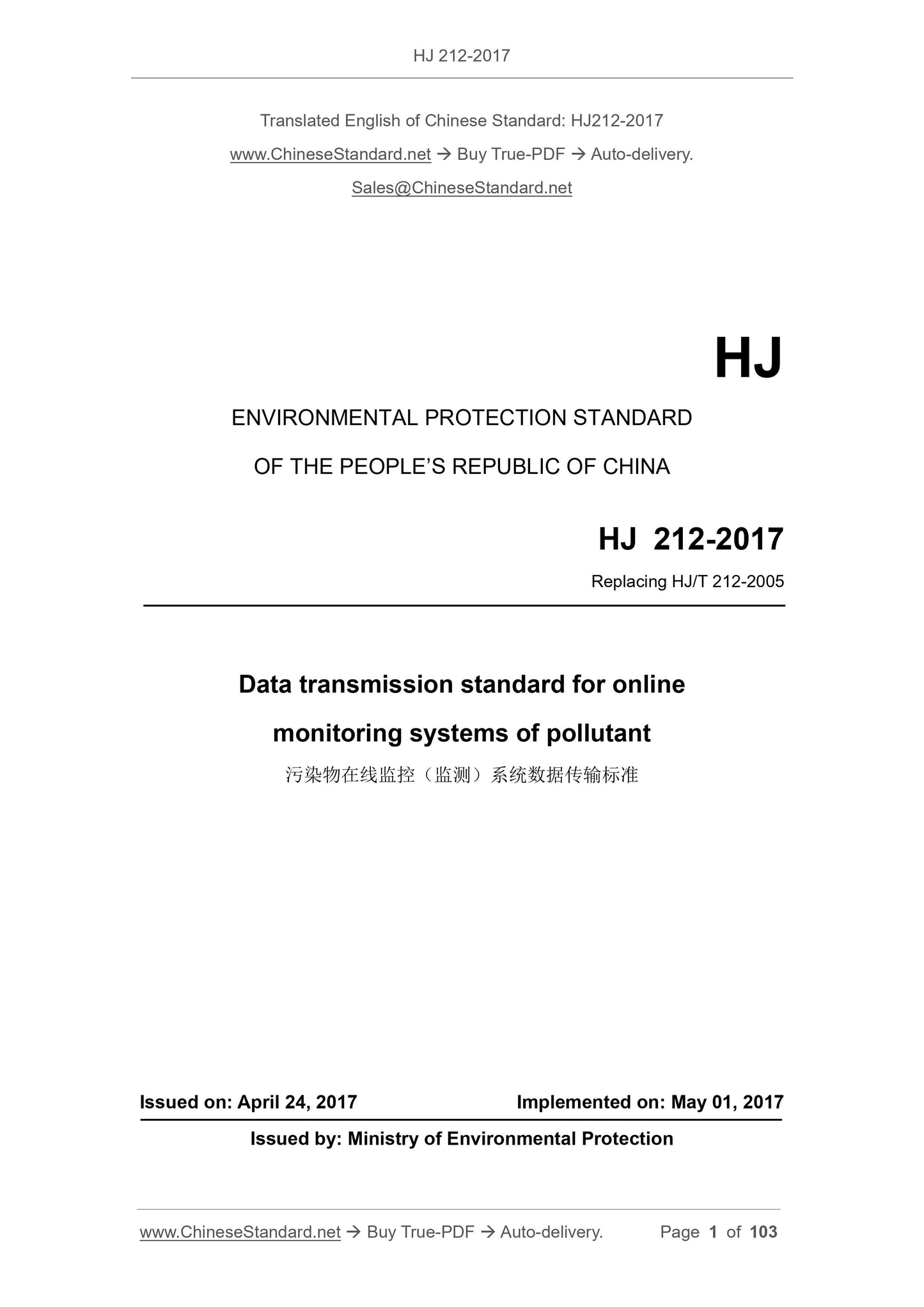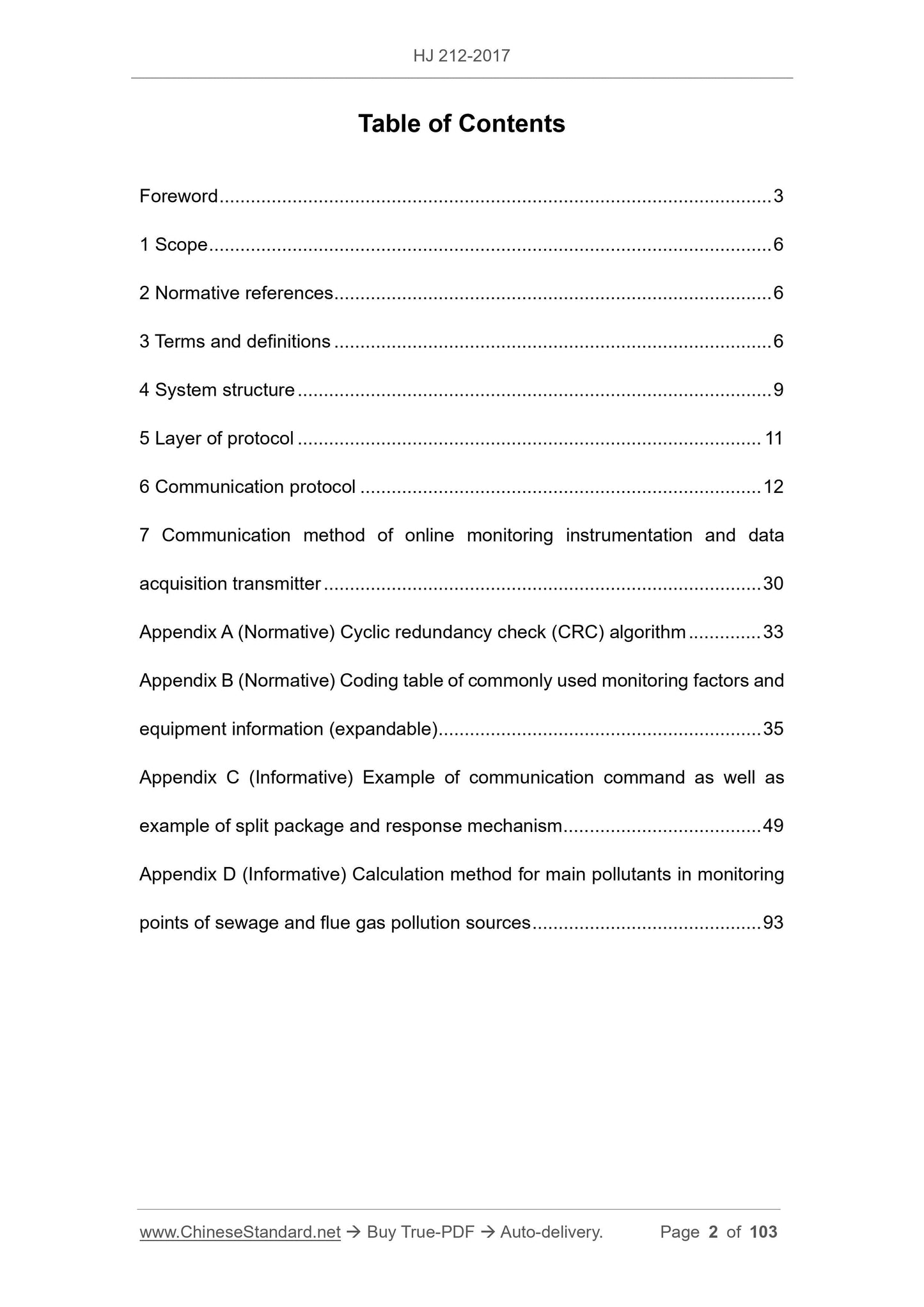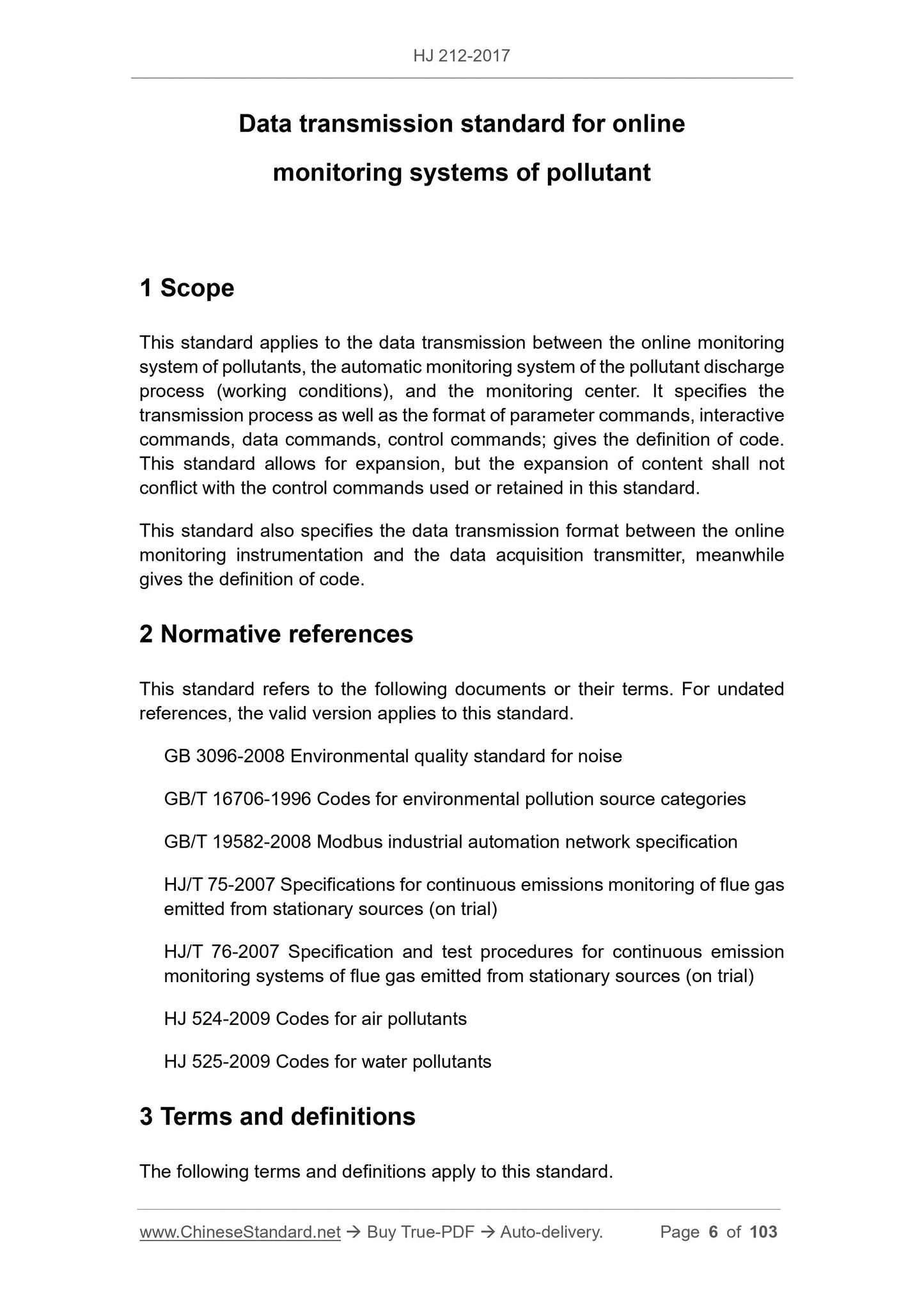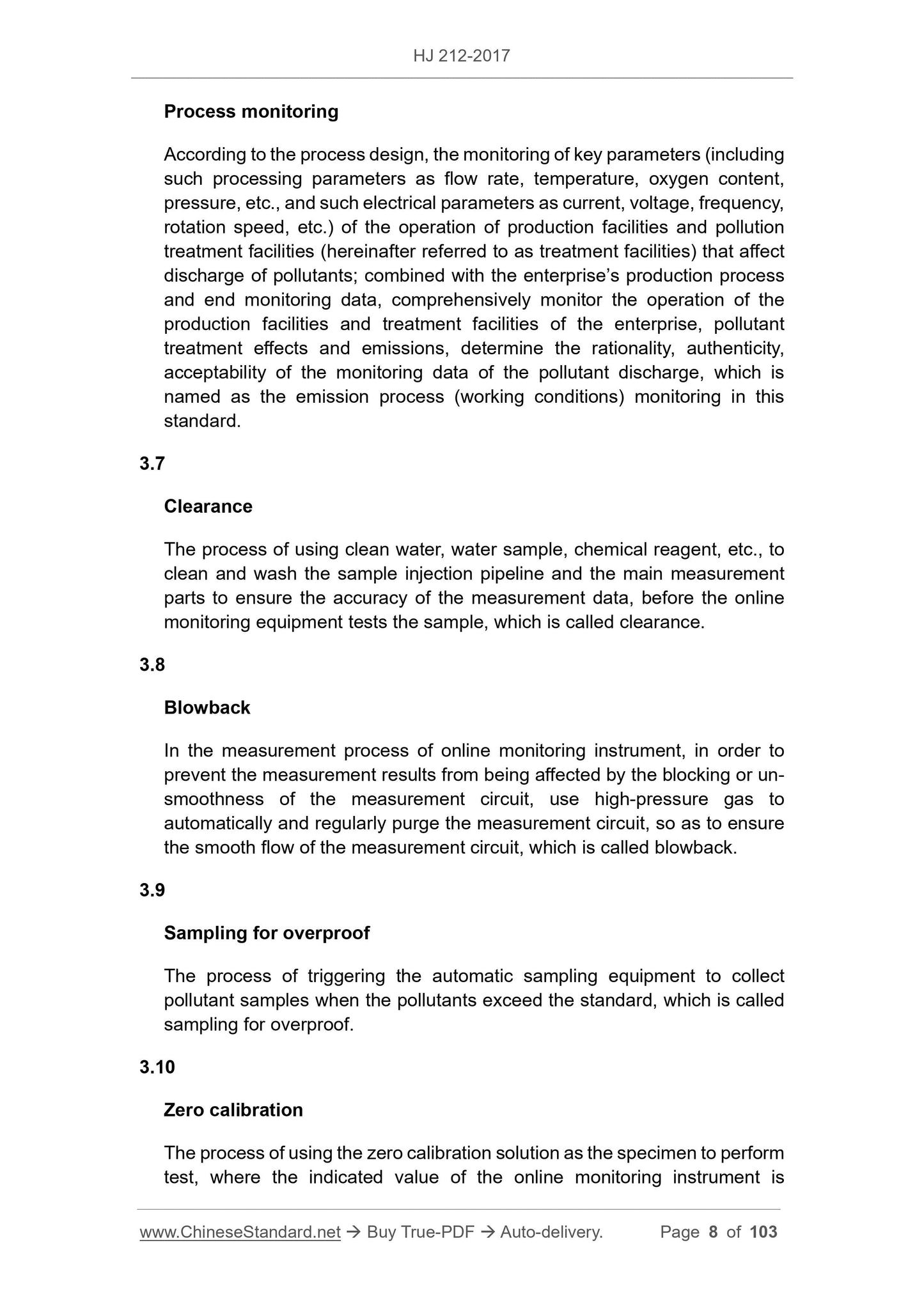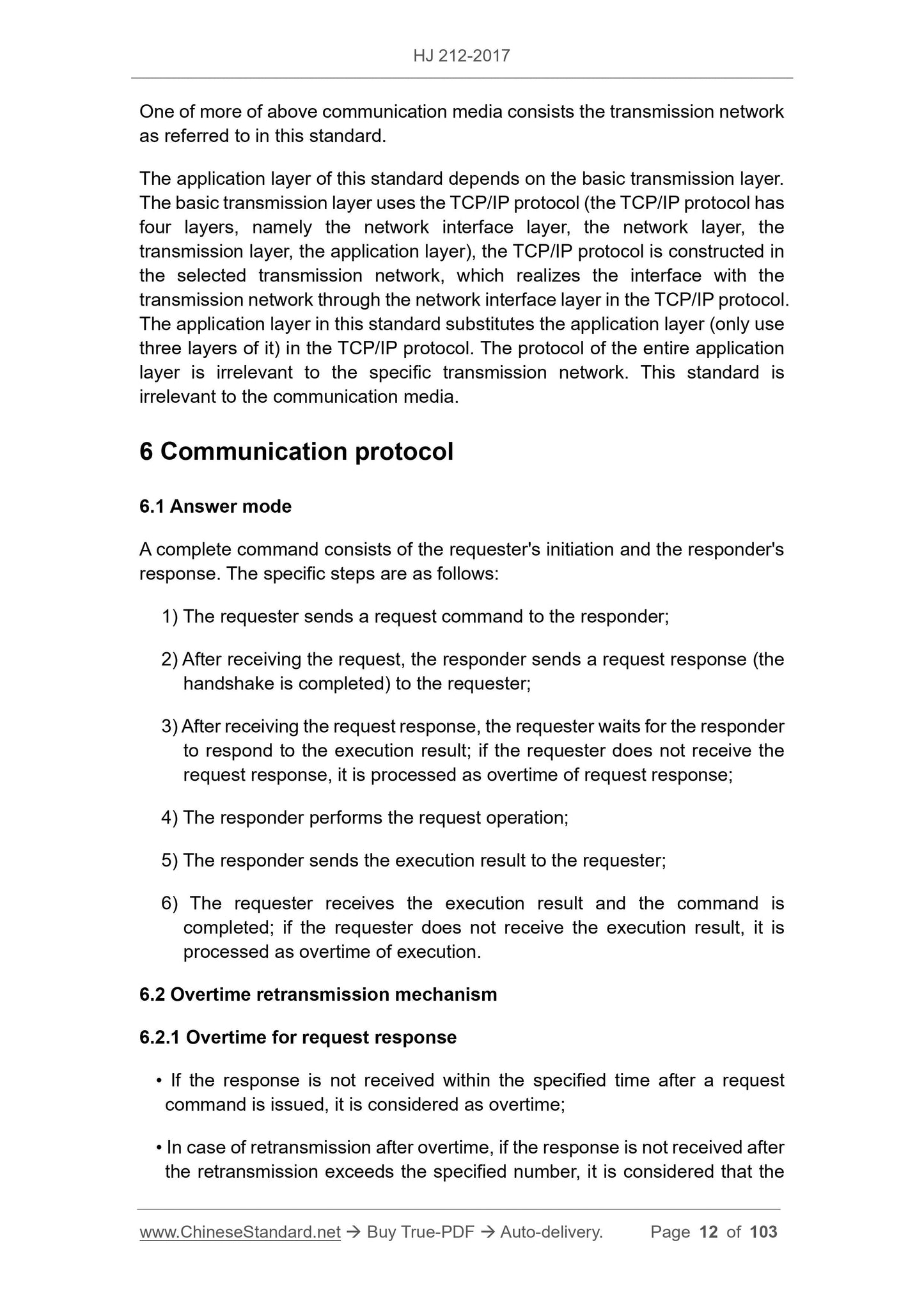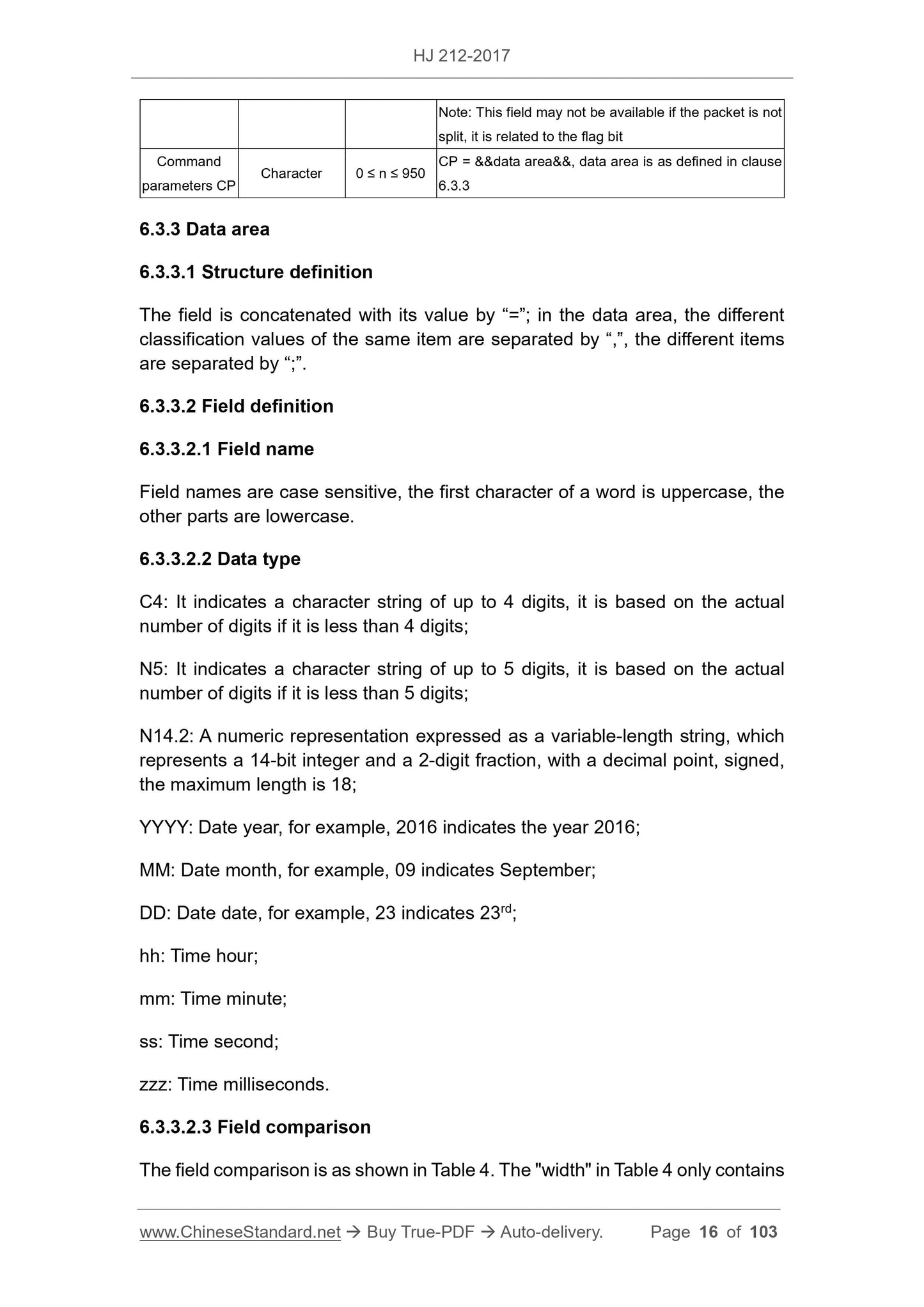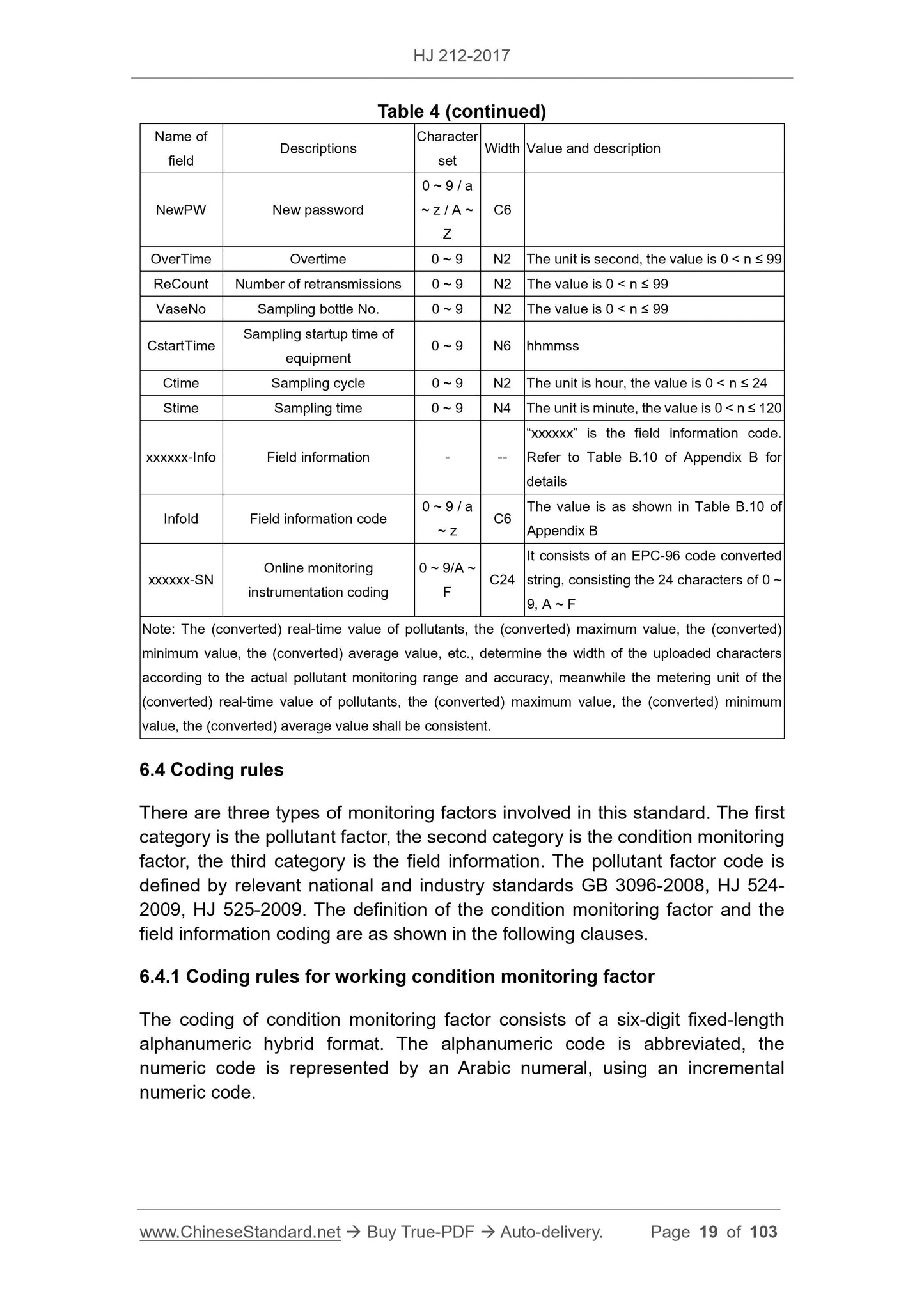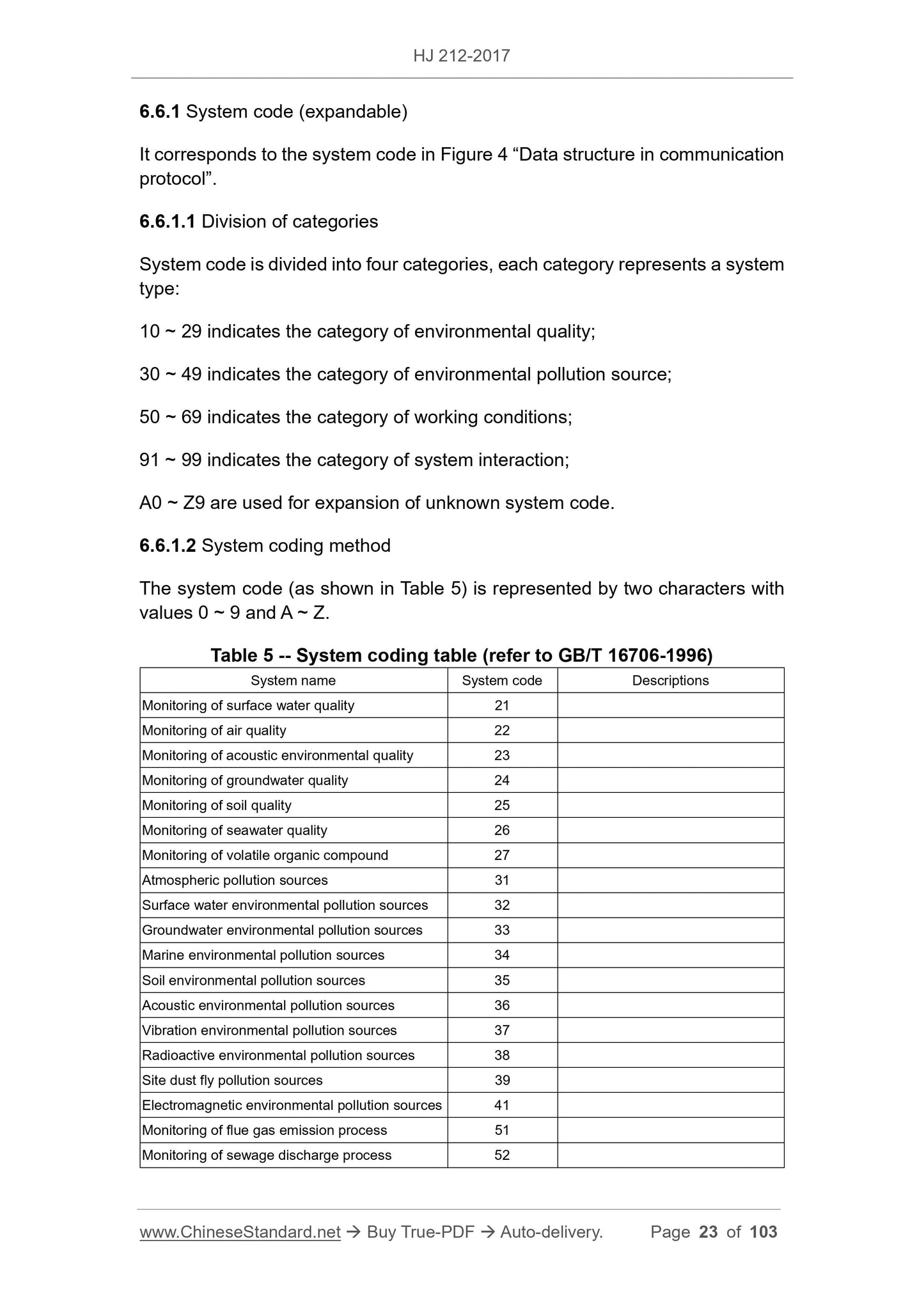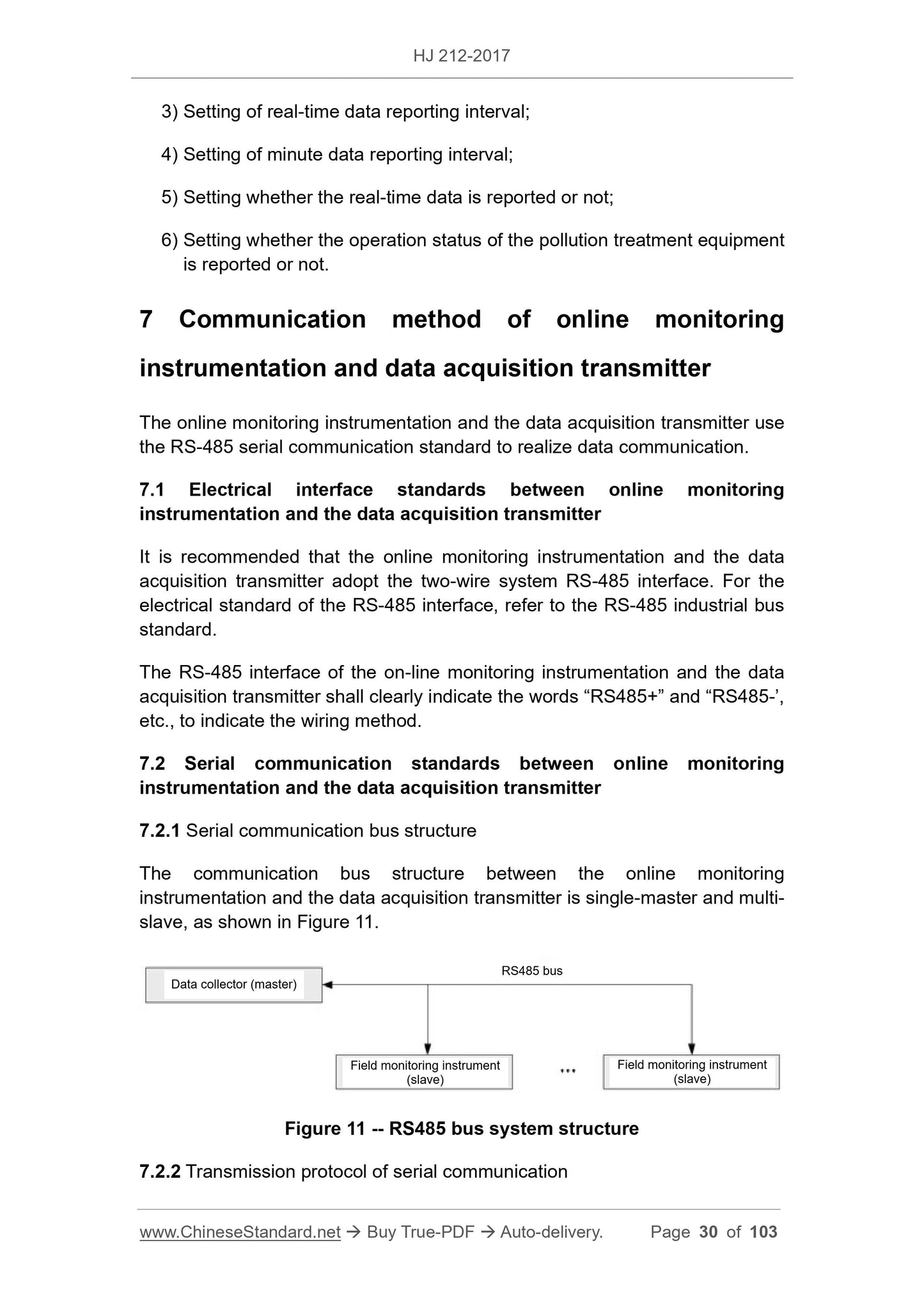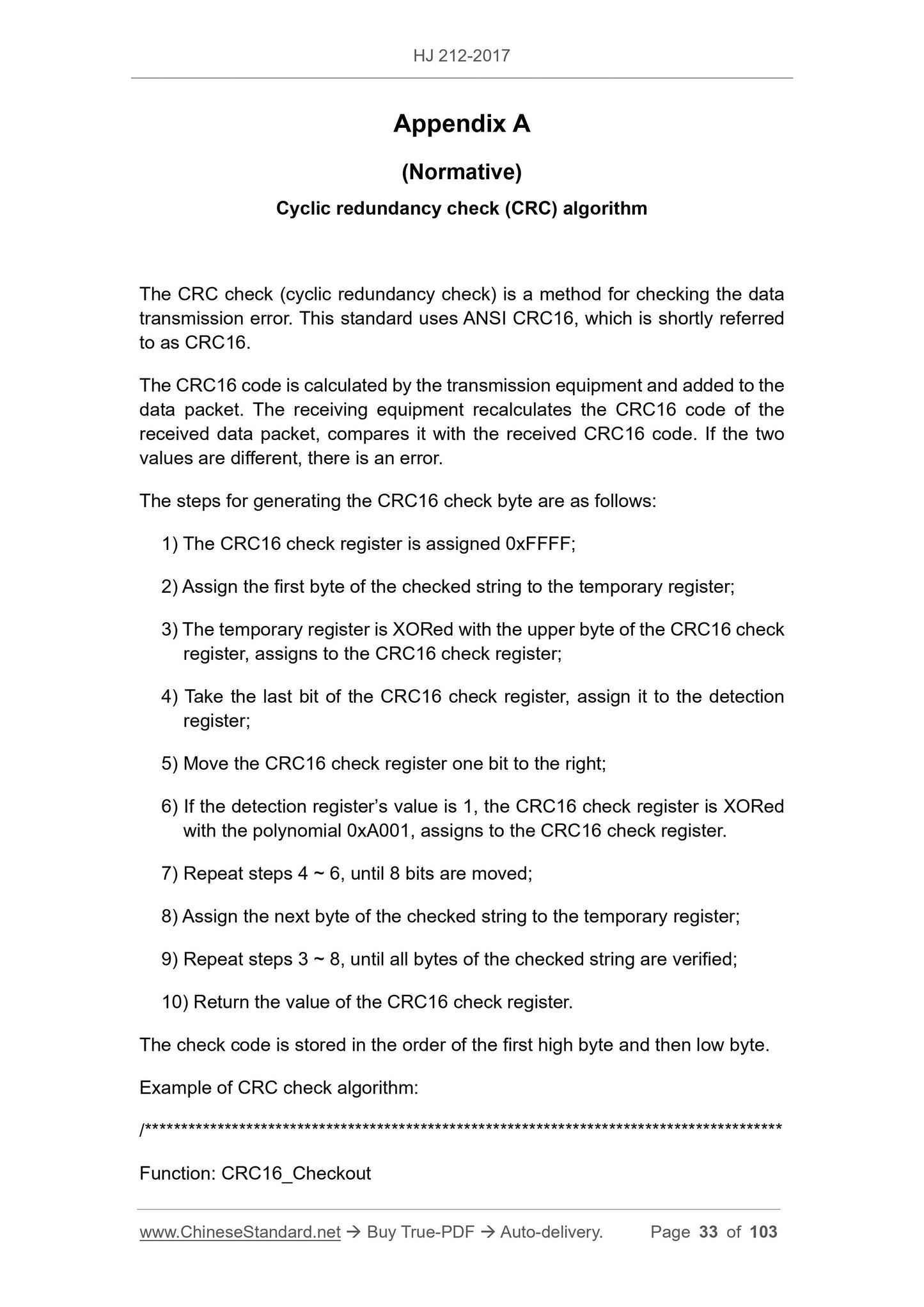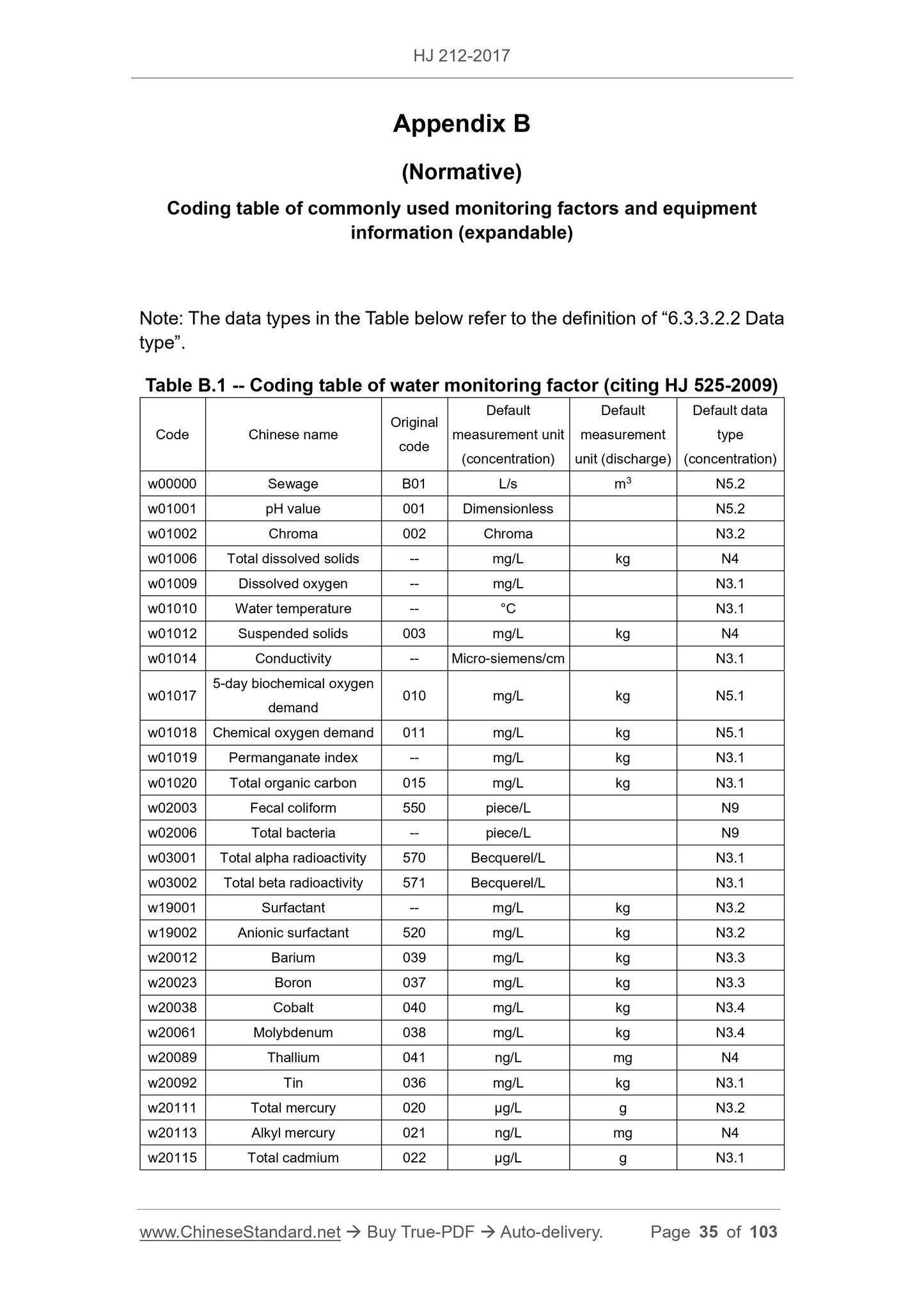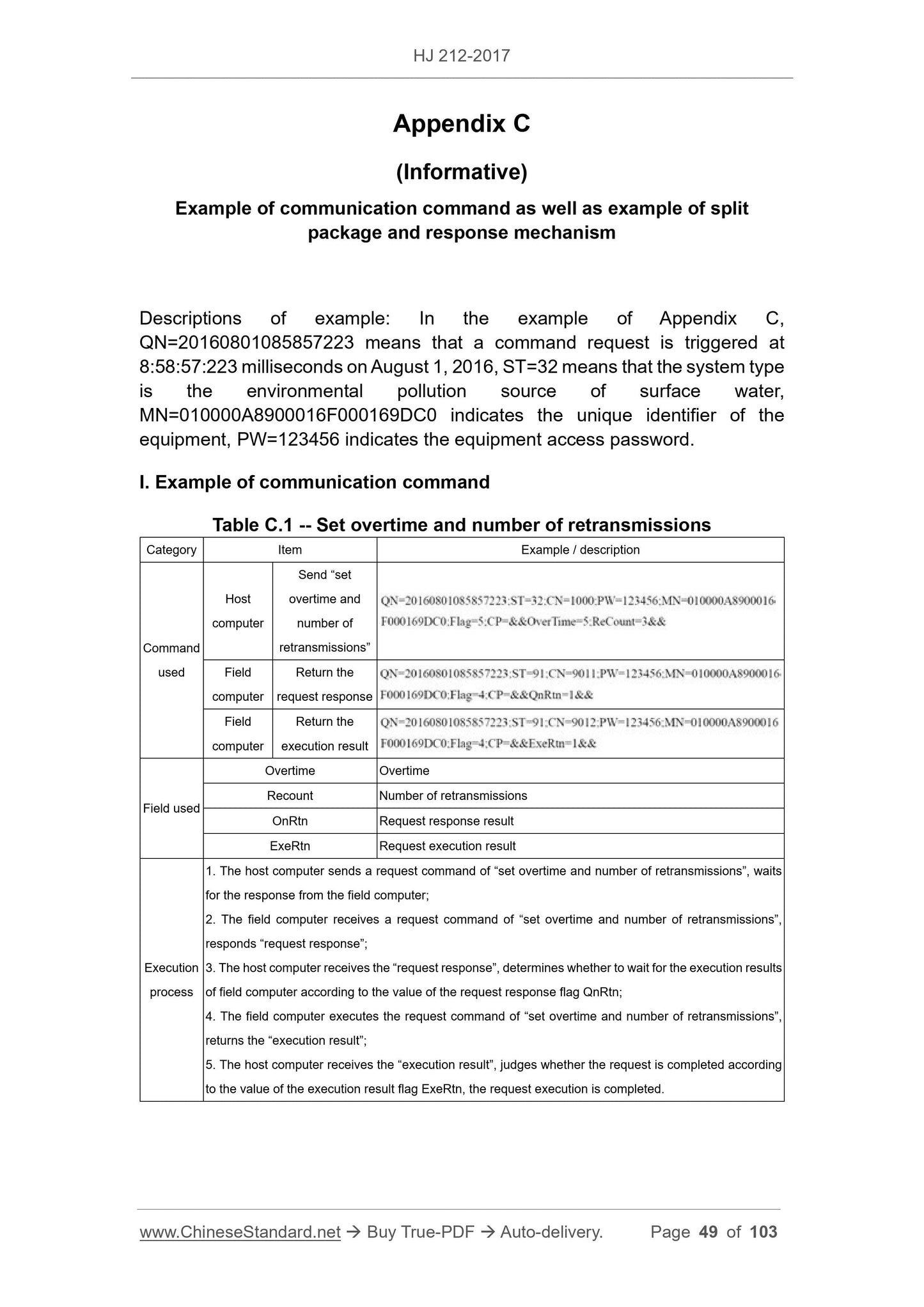1
/
of
12
www.ChineseStandard.us -- Field Test Asia Pte. Ltd.
HJ 212-2017 English PDF
HJ 212-2017 English PDF
Regular price
$495.00
Regular price
Sale price
$495.00
Unit price
/
per
Shipping calculated at checkout.
Couldn't load pickup availability
HJ 212-2017: Data transmission standard for online monitoring systems of pollutant
Delivery: 9 seconds. Download (and Email) true-PDF + Invoice.Get Quotation: Click HJ 212-2017 (Self-service in 1-minute)
Newer / historical versions: HJ 212-2017
Preview True-PDF
Scope
This standard applies to the data transmission between the online monitoringsystem of pollutants, the automatic monitoring system of the pollutant discharge
process (working conditions), and the monitoring center. It specifies the
transmission process as well as the format of parameter commands, interactive
commands, data commands, control commands; gives the definition of code.
This standard allows for expansion, but the expansion of content shall not
conflict with the control commands used or retained in this standard.
This standard also specifies the data transmission format between the online
monitoring instrumentation and the data acquisition transmitter, meanwhile
gives the definition of code.
Basic Data
| Standard ID | HJ 212-2017 (HJ212-2017) |
| Description (Translated English) | Data transmission standard for online monitoring systems of pollutant |
| Sector / Industry | Environmental Protection Industry Standard |
| Classification of Chinese Standard | Z10 |
| Classification of International Standard | 13.020.40 |
| Word Count Estimation | 62,611 |
| Date of Issue | 2017-04-24 |
| Date of Implementation | 2017-05-01 |
| Older Standard (superseded by this standard) | HJ 212-2005 |
| Quoted Standard | GB 3096-2008; GB/T 16706-1996; GB/T 19582-2008; HJ/T 75-2007; HJ/T 76-2007; HJ 524-2009; HJ 525-2009 |
| Regulation (derived from) | Ministry of Environmental Protection Notice No. 15 of 2017 |
| Issuing agency(ies) | Ministry of Ecology and Environment |
| Summary | This standard applies to the data transmission between the pollutant on-line monitoring (monitoring) system, the pollutant discharge process (condition) automatic monitoring system and the monitoring center, and specifies the transmission process and parameter commands, interactive commands, data commands and control commands. The format of the code, given the code definition, this standard allows extensions, but the extension of the content must not conflict with the control commands used or retained in this standard. This standard also stipulates the format of data transmission between on-line monitoring (monitoring) instruments and data acquisition and transmission devices, and gives code definitions. |
Share
